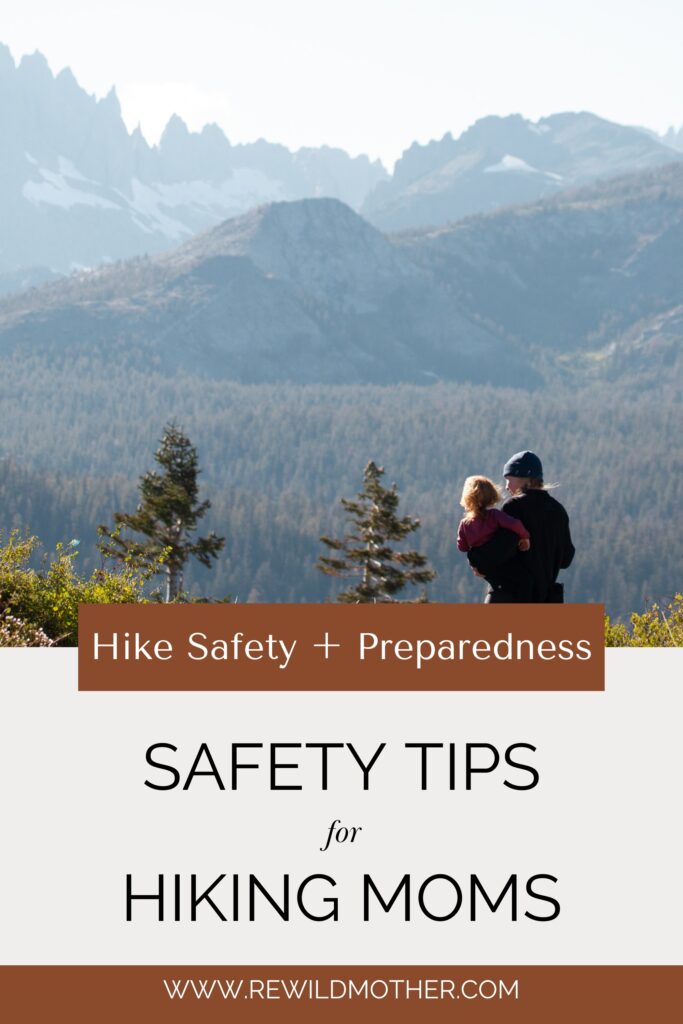
On our weekly hike meet up with our friends last week we encountered something that I’ve been absolutely DREADING… a tick was inside the stroller of one of our friends.
We’ve experienced a couple bad years for finding a lot of ticks before. One year when we lived on the Central Coast of California was absolutely horrific. They were absolutely everywhere, and regardless of how much I tried to avoid them on our hikes, I was still flicking them off my pants and constantly doing tick checks on all of us and our dog. We’d walk out our front door to take the dog out to the grass on a leash, and she’d still come back with an average of 6-8 ticks crawling up her legs.

Thankfully, we haven’t had awful years like that since 2019. However, the benefit to it is that I have absolutely nailed down my protocol (after reading some great info from the Natural Nurse Momma) for treating them, and I have eagle eyes for spotting them. I guess I’ll take a win wherever I can, lol!
This is absolutely the season for them to be more present on trails, so here’s my protocol for preventing tick bites and treating them if it does happen.
Disclaimer: this is absolutely not medical advice. I am not a doctor and should not be treated as such. This is my personal experience and protocol. The reader of this blog is expected to continue doing their own research, make their own choices, and hold the author of this blog harmless.
Step 1: AVOIDING TICK ENCOUNTERS
The very best way to handle tick bites is to try not to get one in the first place. Here are some ways to avoid tick encounters:
- Wear long pants tucked into high socks so they can’t jump onto your legs and hide behind the knees, around the ankles, etc. Try to keep as much skin covered as possible. Doing this gives you more time to notice that they are on you and get them off before they bite.
- Avoid brushing against tall grass and bushes. This is where they wait for a person or animal to pass by so they can jump on. Not brushing through overgrown areas can also help you avoid snake encounters.
- Do a quick tick check periodically while on the trail and a full check once you’re back to the car. Again, getting them off as soon as possible is the best way to avoid issues. While on the trail, I do a quick glance at my kids clothes to make sure they haven’t picked up any unwanted hitchhikers. Then, once we’re back at the car, we’ll do a full check and use a sticky lint roller on our clothes to make sure there aren’t any little ones that we can’t see. I make sure we check: shoes, ankles, waistbands, hairline, etc. Other areas to check once at home include: hair (again), armpits, behind the knees, any little cracks and crevices that they can hide.
- Avoid petting dogs when passing other hikers. We love dogs and I know this is tempting. However, an off leash dog likely has run through tall grass, bushes, etc, and absolutely could have picked up ticks and/or poison oak. It’s a great habit, especially during “tick season”, to let dogs pass without petting them.
I’ll note: I’m not super strict about this unless we are in a bad “tick season”. I determine this by paying attention to reports from other hikers about tick bites, or seeing a lot ticks on the trail myself. If we haven’t seen ticks or we’re in fall or winter season when they *usually* aren’t very present, I’ll be much more relaxed with our protocol to avoid them.
Step 2: TREATMENT
I first learned about homeopathic treatment protocols for tick bites from an email from The Natural Nurse Momma years ago and I think she’s a great resource. Her website is linked below under “Sources”. Since then, I have diligently researched the items listed below and formed my personal response to treating tick bites. Here it is:
Note: I have all of the items below conveniently listed on my Amazon Storefront in a list titled “Tick Bite Treatment / Prevention“
If you have been bitten by a tick, the first step is to remove it and save it in an airtight container. Remove the tick using tweezers or a tick key and be sure to remove the tick’s head, too. Grab as close to the skin as possible and pull. Once the tick is out, save it in an airtight container.
Next, I’d make a paste of french green clay with Andrographis, cover the bite and surrounding area, and change the paste every morning and night. I make enough paste to last a day or two and save it in the fridge. This green clay paste is supposed to draw toxins out of the skin. I’d do this, morning and night, for one week. (Note: I use this paste for bug bites and bee stings on my kids, too!)
Additionally, I’d orally take Astragalus and Ledum to prophyllactically treat any diseases the tick could have been carrying.
Astragalus supports the immune system and has anti-bacterial and anti-inflammatory properties. It is an adaptogen and it protects the kidneys and liver. It is a perennial plant that is native to China and has been used in Auyervedic and Traditional Chinese medicine. The root is the medicinal part that is turned into a tincture (my preference) or capsules.
Ledum Palustre is for treating insect stings, bites, skin infections, and much more. It is an evergreen shrub that goes by the botanical name of Rhododendron Tomentosum. The entire plant is edible and is popularly made into tea for treating a myriad of ailments.
Recap of tick bite treatment protocol to be done for one week:
- French green clay with Andrographis for detoxing the skin
- Ledum Palustre and Astragalus orally per dosages on bottles
- Monitor bite area and immune system for reactions
- Keep the tick in an airtight container and send it to TickReport if a reaction develops
I have all of these items listed on my Amazon Storefront to make it super easy to put your tick treatment kit together quickly. It’s a great idea to collect all of these items in a small bag or storage container with the instructions written down. This way, you can easily pack it for camping trips or just have everything organized and ready at home.

Step 3: SEND THE TICK TO TICKREPORT, if necessary.
If you develop a reaction, you can send the tick in to a service called TickReport that tests them for Lyme and other diseases.
In my opinion, it’s very important to save the tick if possible in case testing is necessary. If a reaction does begin to develop, you can figure out what the disease is and begin treatment as soon as possible.
Personally, I have only found ticks on my hiking pants and my dog (except for one time in college that I found a tick on the back of my neck in my hairline and just about had a heart attack! I didn’t have this protocol down at that time, though ?). I’ve held off on sending ticks in after removing them from my dog. I’ve kept them for a week or two, and when a reaction didn’t happen, I tossed them. Certainly, everyone needs to make their own decision on sending ticks in for testing, but my protocol is to wait for a reaction to be present. Otherwise I would have paid for dozens and dozens of ticks to be tested only for no reaction to happen after.
I hope that this information helped you get a game plan for avoiding ticks this Spring without stirring up fear. The fact is, nature is incredible AND it is abundant in things that we should be aware of. Personally, I like having a good understanding of the few things we should avoid to stay safe and healthy, which is why keeping tick avoidance and tick treatment on my radar is important to me.
Wishing you tons of (tick-free!) fun hikes and springtime adventures!
xx,
Kaleigh
P.S. make sure you’re subscribed to my newsletter (below) and come hang out with us on Instagram!
Disclosure: Please assume that any / all of the links throughout this website are affiliate links. Shopping these links returns a commission to the site owner at no extra cost to the customer. Rewild Mother / Kaleigh Eliza is a participant in the Amazon Affiliate LLC program where commissions are earned. Thank you so much to everyone who shops my links and directly supports my mama-run small business!
Sources:
https://www.naturalnursemomma.com

View comments
+ Leave a comment